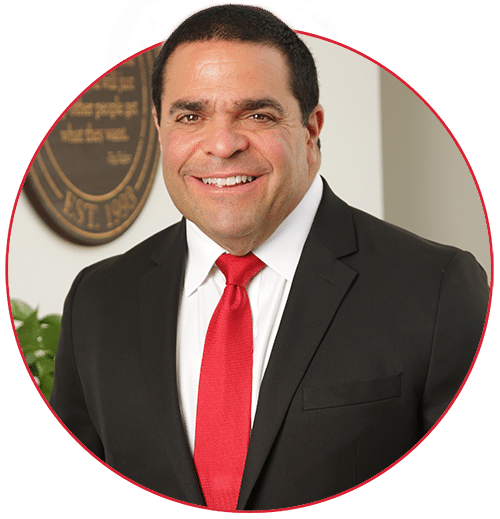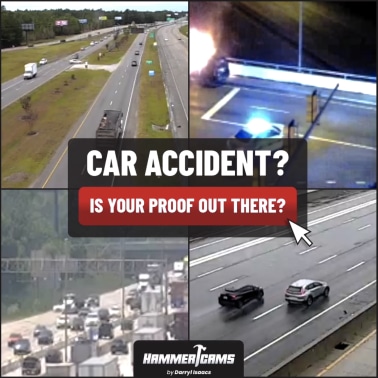Episode 03 – Who Is At Fault In A Car Accident?
“Ask The Hammer” – Exploring the Legal Matters That Matter Most
Welcome again to the podcast series now available on iTunes and Stitcher Radio! “Ask the Hammer” is the radio show with attorney Darryl Isaacs, “The Hammer.” Do you have a legal question for The Hammer? You can submit your questions via Facebook or Twitter using #askthehammer or give the offices of Isaacs & Isaacs a call at 800-333-9999. We’d love to use your questions on the show!
Questions answered in this episode:
- What are my next steps when I’m in a car accident that is not my fault?
- What if the accident is my fault?
- Should I admit it when it’s my fault?
- How do “No Fault” states work?
- What is the difference between negligence and an intentional act when it comes to fault?
- What do I need to demonstrate in order to move forward with a car accident personal injury case?
- How does a hit and run accident affect my ability to file a claim?
- Our social media question of the week – the questions listeners Ask The Hammer
Visit Our Car Accident Lawyer Page
You can also listen to this episode via Apple Podcasts, Spotify, Stitcher Radio, SoundCloud or Google Play.
Episode 03 Transcription
[music]
Host:
Welcome to Ask the Hammer, the podcast exploring the legal matters that matter most. I’m your host, Jeremy Kocal, and as always we are here with attorney Darryl Isaacs, “The Hammer,” ready to take on the most popular questions about law.
Today’s episode: Who Is At Fault In a Car Accident?
We’ll discuss next steps to take when an accident is my fault, when it’s not my fault, the difference between “fault” and “no fault” states, hit and run accidents and more.
OK Darryl, what do I do when I’ve been injured in an accident that wasn’t my fault?
Darryl:
Well, OK, depending on which state, because Kentucky’s a “no fault” state. So let’s assume it happened in Kentucky. I think the first step is critical: call the police, get a police report.
And then after the police come they write a report, then the second step would be, if you’re injured, go get treated for your injuries. The police will offer maybe to get you an ambulance, take you to the hospital. If you have any signs of injuries, you need to get examined immediately.
And then you notify your insurance agent that you were in an accident, you weren’t at fault. You want to get your no fault benefits started. We also call no fault the PIP Benefits – PIP – it’s Personal Injury Protection. And then after you do all that, I’m always encouraging you to talk with a lawyer. Lawyers don’t cost you any money. They work on what’s called a contingency. If they don’t collect money, you don’t pay them. So you want their advice.
Host:
And how about a scenario where I may have actually caused the accident?
Darryl:
In Kentucky, you can still recover if you’re at fault, you just can only recover the percent you’re not at fault. So, I’ll give you an example – we’re what you call a comparative negligence state. So let’s say you’re 90 percent at fault, you can still recover 10 percent. If you’re not at fault, you get 100 percent. It’s just at the percent of not at fault. But other states like Indiana, if you’re 51 percent or more, you cannot recover.
Host:
OK, so then how do fault and no fault states actually work?
Darryl:
I think when people hear the word at fault, like, if you’re talking divorce, they call it a no fault, it doesn’t matter, regardless of fault, you can still get a divorce. No fault is confused — Kentucky, when they say they’re a no fault state, that pertains to the medical bill coverage. So when you hear the words no fault coverage, that’s for the PIP – Personal Injury Protection. It does not relate to the liability portion of who caused the accident. So Kentucky’s a no fault state. Indiana and Ohio don’t have PIP so they don’t consider themselves a no fault state.
Across the country, anybody that lives in a no fault state, that’s only referring to a certain type of medical bill coverage for insurance.
Host:
So then legally speaking, should I even be using words like, “It’s my fault,” or “I caused that” at the scene of an accident?
Darryl:
Well they should never say it’s their fault. I mean, don’t admit to anything. They can just explain what happened and they might think they’re at fault and they really may not be. Every driver has a lot of duties that they’re obligated to do like maintain a proper lookout, keep your car at a safe distance. You never want to mention, “Hey, I’m at fault.” Now if the other driver [laughs] says, “Hey, I’m at fault” or something, that’s OK. You just don’t want to admit it.
Host:
OK, that’s a good distinction. So the word “accident” is a little bit confusing sometimes. Legally speaking, can something be accidental, or an accident, and still have somebody who is at fault?
Darryl:
Yeah, because believe it or not, you want someone to be an accident. You don’t want to be an intentional act.
Host:
So then what is that difference between an accident happening through negligence or through an intentional act?
Darryl:
Well here’s the thing – A lot of insurance companies — and maybe more than not — will have coverages for acts of negligence.
Host:
And what is negligence?
Darryl:
Well, negligence is just like an accident. You know, it’s just like a mistake. You’re driving along and you accidentally stop paying attention, look away and come back. It’s just something you’re not doing with intent. But if you did an intentional act, they’re wouldn’t be coverage, so you really want negligence, you want accident.
Like in Kentucky, if I’m driving my car and I see someone I don’t like and I intentionally hit them, there’s a clause that says the most an insurance company is liable for is, say, $25,000, even though you might have a million dollars in coverage, because it’s an intentional act.
Negligence is, I just hate to say it, is a good thing because so many people make innocent mistakes and they’re covered by it, and if you’re hit by them you want the coverage as well.
Host:
So then what do you have to actually produce to move forward with these car accident cases?
Darryl:
You know, in every case, there’s two issues: there’s liability and damages. So you have to prove liability – you have to prove that someone is at fault and responsible for your injuries, and then two, you have to actually sustain injuries.
Host:
OK, so then if I’m in a car accident and one of the drivers doesn’t actually have insurance, where does that leave me?
Darryl:
You’re responsible for your medicals up to the first $10,000. That’s why it’s your obligation to carry Personal Injury Protection, or PIP or no fault insurance. If you decline the coverage or don’t pay your premiums, it’s hard to recover your medicals. It’s gonna make it a little more challenging to bring a claim. Doesn’t mean it can’t be done, it’s just more challenging.
Host:
And how about in the case of a hit and run accident?
Darryl:
OK, a hit and run – if you can’t find who has caused the damage or injuries, then you can make, like if you’re in an accident you can call the police to make a report, a hit and run report. And then if you have what’s called Uninsured Motorist… most states it’s mandatory that you have Uninsured Motorist because there’s a high probability that a person in an accident may not have insurance. So in that scenario then, we would use the uninsured portion of their insurance policy to file a claim.
Host:
We turn once again to social media and the questions that you would like to Ask The Hammer. Today’s question comes from Twitter. OK Darryl:
If you are in your car and you are passing by the scene of an accident, are you as an attorney allowed to pull over, interact with those that have been involved in the accident and offer your services as a lawyer?
Darryl:
No, that’s direct solicitation, no you’re not allowed to do that. Most states have ant-solicitation rules. Basically they can contact you and you can return their call. They’ve got to make contact with you. You can’t just come upon the scene of an accident and offer your services. That would be an ethical violation.
Host:
And does that fall under the category of “ambulance chasing.”
Darryl:
Well [laughs], it can’t help. That’s for sure. Um, yeah, that just wouldn’t be a good sign [laughs].
[music]
Host:
If you have a legal question you’d like to Ask The Hammer, reach out to us on Twitter, on Facebook , or the website, IssacsandIsaacs.com, we’d love to tackle your question on our next show.
And here’s our legal disclaimer:
This podcast should not be used in any legal capacity whatsoever. If you have specific legal questions, contact an attorney to discuss specific legal matters about your case. The attorneys of Isaacs & Isaacs operate nationally with their primary office in Louisville, Kentucky. Listeners should note that legal services may be performed by others.
Join us next time with Darryl Isaacs on Ask the Hammer. Thanks for listening.
Visit Our Car Accident Lawyer Page
Get Your Question Answered By Darryl Isaacs
Got a legal question for The Hammer? Reach out using the contact form on this page or give the team at Isaacs & Isaacs a call at 800-333-9999. Be sure to check out the The Hammer’s blog and more podcast episodes from attorney Darryl Isaacs!











